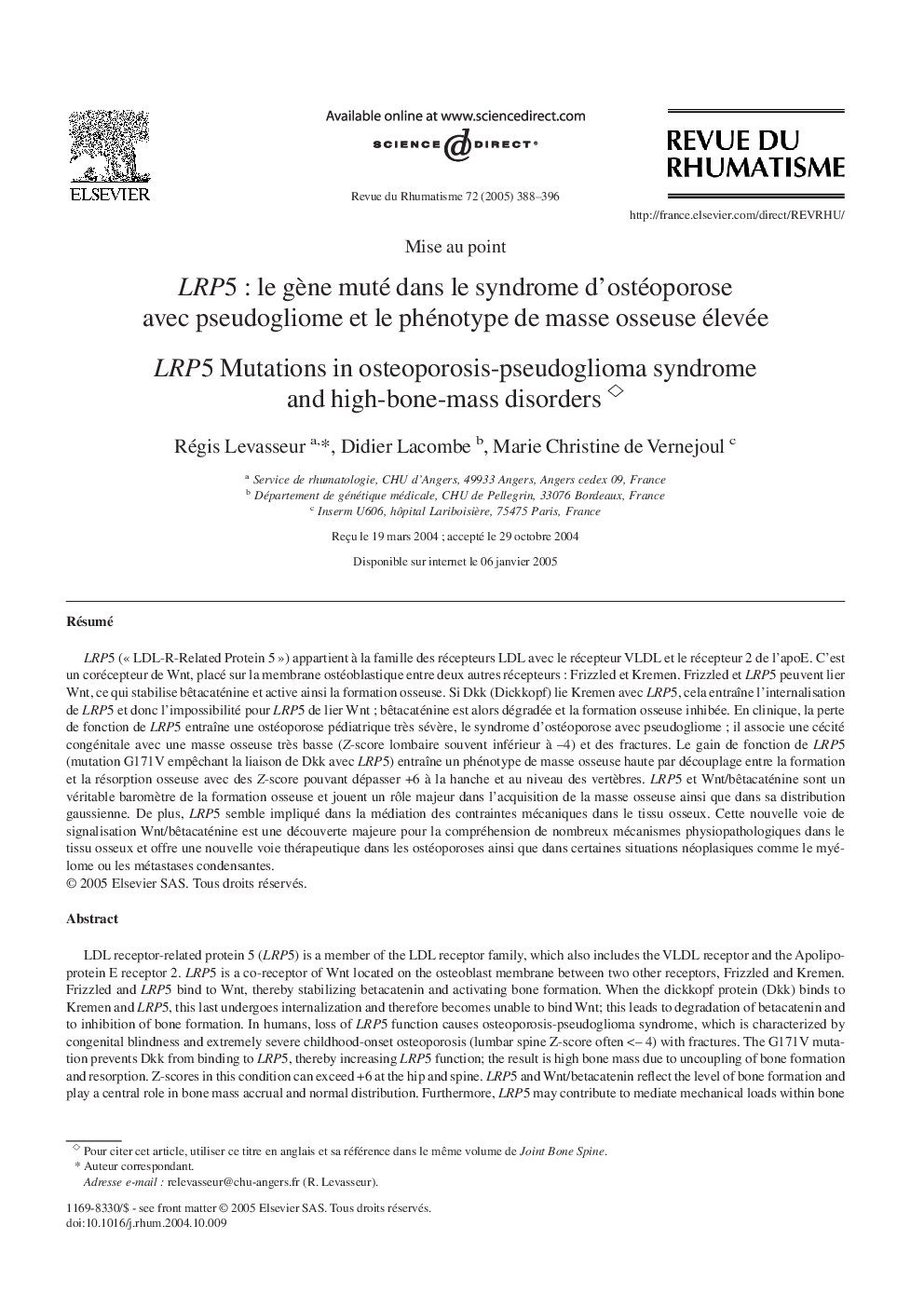| Article ID | Journal | Published Year | Pages | File Type |
|---|---|---|---|---|
| 9272800 | Revue du Rhumatisme | 2005 | 9 Pages |
Abstract
LDL receptor-related protein 5 (LRP5) is a member of the LDL receptor family, which also includes the VLDL receptor and the Apolipoprotein E receptor 2. LRP5 is a co-receptor of Wnt located on the osteoblast membrane between two other receptors, Frizzled and Kremen. Frizzled and LRP5 bind to Wnt, thereby stabilizing betacatenin and activating bone formation. When the dickkopf protein (Dkk) binds to Kremen and LRP5, this last undergoes internalization and therefore becomes unable to bind Wnt; this leads to degradation of betacatenin and to inhibition of bone formation. In humans, loss of LRP5 function causes osteoporosis-pseudoglioma syndrome, which is characterized by congenital blindness and extremely severe childhood-onset osteoporosis (lumbar spine Z-score often <- 4) with fractures. The G171V mutation prevents Dkk from binding to LRP5, thereby increasing LRP5 function; the result is high bone mass due to uncoupling of bone formation and resorption. Z-scores in this condition can exceed +6 at the hip and spine. LRP5 and Wnt/betacatenin reflect the level of bone formation and play a central role in bone mass accrual and normal distribution. Furthermore, LRP5 may contribute to mediate mechanical loads within bone tissue. Identification of the Wnt/betacatenin pathway is a breakthrough in the elucidation of pathophysiological mechanisms affecting bone tissue and suggests new treatment targets for patients with osteoporosis or specific malignant conditions such as myeloma and sclerotic bone metastases.
Keywords
Related Topics
Health Sciences
Medicine and Dentistry
Immunology, Allergology and Rheumatology
Authors
Régis Levasseur, Didier Lacombe, Marie Christine de Vernejoul,
